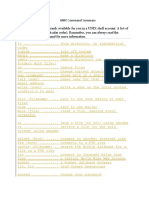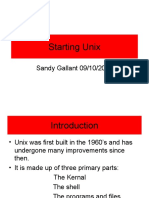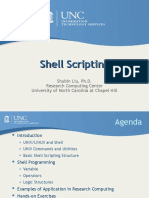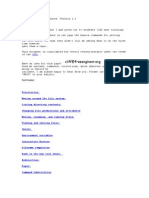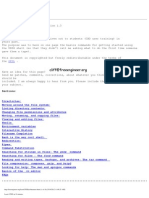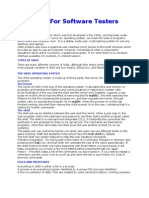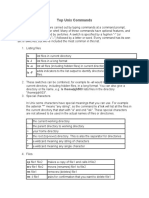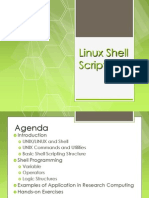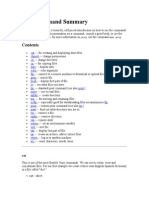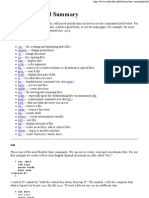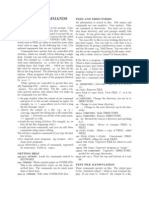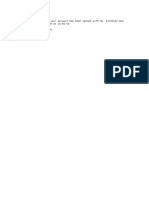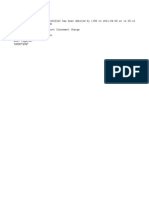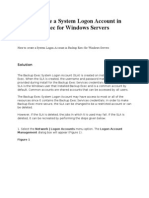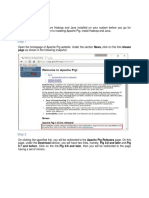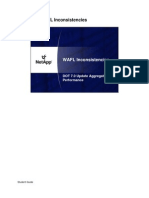0% found this document useful (0 votes)
92 views8 pagesTB Unix Cheat Sheet
This document provides a cheat sheet for basic Unix commands. It lists and describes commands for getting help, listing directories, changing directories, creating/removing directories, copying/moving/deleting files, viewing/editing text files, finding files, creating aliases, using wildcards and shortcuts, and using pipes and redirection. The cheat sheet is intended to help the author remember common Unix commands for their C-shell account on the RAIN system.
Uploaded by
Nett2kCopyright
© © All Rights Reserved
We take content rights seriously. If you suspect this is your content, claim it here.
Available Formats
Download as PDF, TXT or read online on Scribd
0% found this document useful (0 votes)
92 views8 pagesTB Unix Cheat Sheet
This document provides a cheat sheet for basic Unix commands. It lists and describes commands for getting help, listing directories, changing directories, creating/removing directories, copying/moving/deleting files, viewing/editing text files, finding files, creating aliases, using wildcards and shortcuts, and using pipes and redirection. The cheat sheet is intended to help the author remember common Unix commands for their C-shell account on the RAIN system.
Uploaded by
Nett2kCopyright
© © All Rights Reserved
We take content rights seriously. If you suspect this is your content, claim it here.
Available Formats
Download as PDF, TXT or read online on Scribd
/ 8
